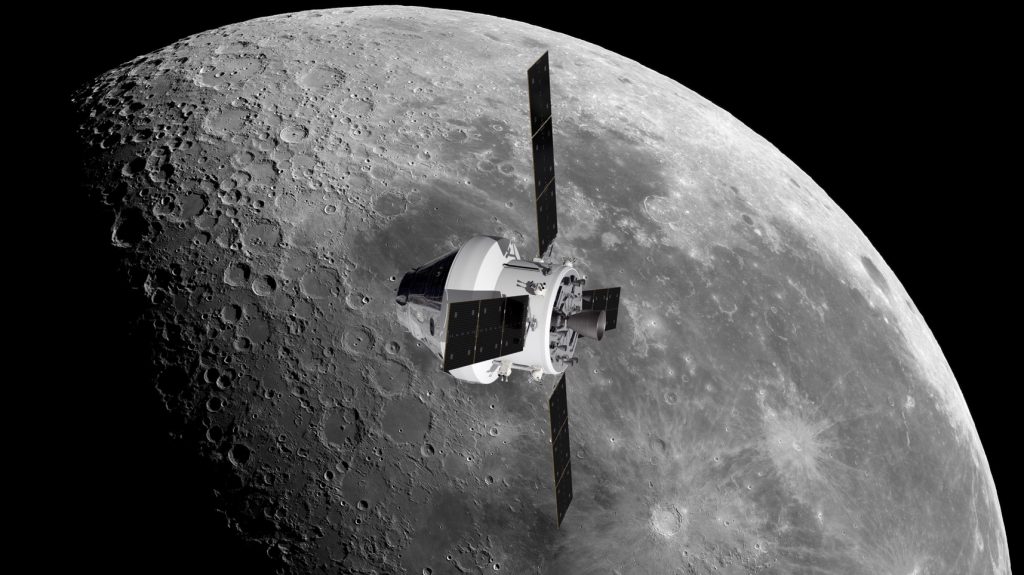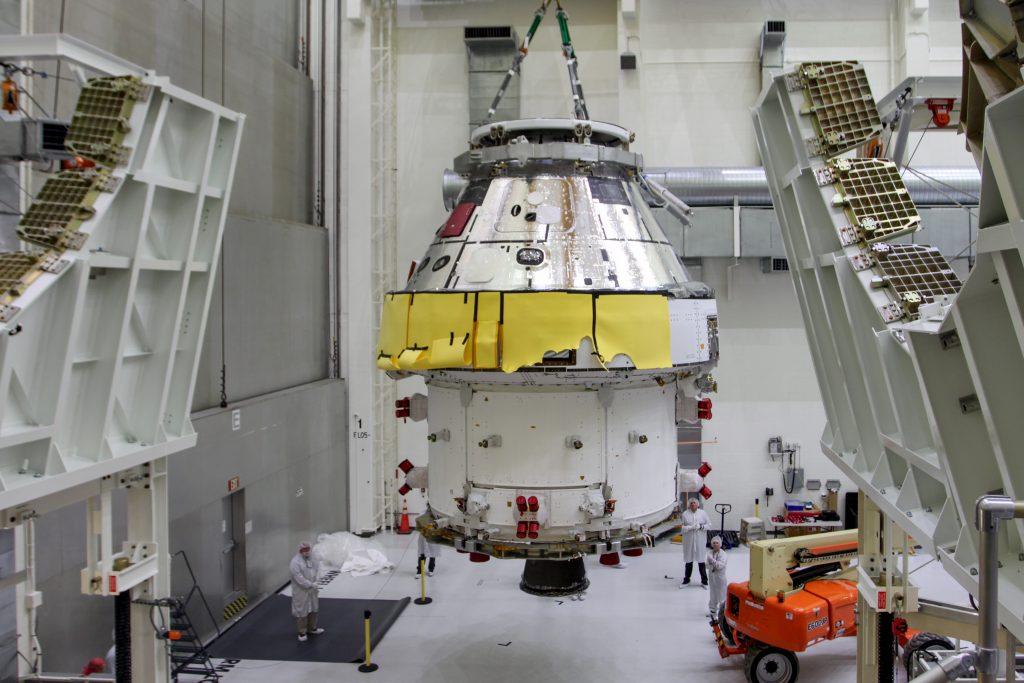On 11 December the first European Service Module passed its Acceptance Review and was formally handed over to NASA, the hardware is now officially NASA property. This marks the end of 9 years of designing, building and putting all the pieces together to make the next-generation powerhouse that will propel Orion spacecraft to the Moon.

The Acceptance Review was held as teleconference with 85 people attending specifically for the first European Service Module – each module gets their own individual acceptance review.
Complete stack
The complete Orion stack will now be handed to NASA’s launch processing teams for a launch next year.
Nico Dettmann, ESA’s Lunar Exploration group leader says, “congratulations to all teams for the outstanding work to achieve this milestone, it is a privilege to be part of such a team effort.”
Didier Radola, Airbus head of the Orion’s European Service Module programme said, “this is a great achievement for the programme today, and I would like to underline the excellent ESA and Airbus teamwork that has led to this point.
“This is one step beyond to the Moon as well as a promise of more to come for the European Service Module in 2021!”
Orion is a foundational element of the Artemis program, beginning with Artemis I, the first integrated flight test of Orion and SLS next year. Artemis II will follow as the first human mission, taking astronauts farther into space than ever before.


 Automated Transfer Vehicle page
Automated Transfer Vehicle page ATV blog archive
ATV blog archive
Discussion: 2 comments
Hello,
Is it correct that old OMS Space Shuttle engines will be used on the European Service Module?
Best regards,
Samuel
Yes, it is, see here: https://blogs.esa.int/orion/2018/12/18/a-new-round-of-propulsion-tests-for-orion/